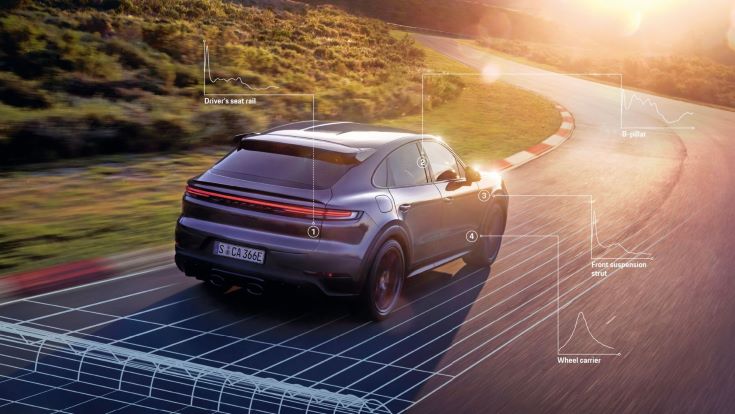
Porsche Evaluating ride comfort objectively with AI
London, April 04, 2025, (Oilandgaspress) –––Porsche Engineering has developed an AI-based driving-comfort evaluation system that supplements the assessments made by human experts to deliver objective results and accelerate development time. It will also be possible to use it in series-production vehicles in order to provide information on chassis performance during vehicle use.
Many criteria characterize a good car. Driving comfort plays a key role in this—both the decision to buy a particular model and subsequent customer satisfaction are decisive, among other things. For this reason, before a new vehicle is launched on the market, manufacturers carry out numerous driving comfort tests. Porsche Engineering also undertakes testing and tuning on behalf of OEMs, in the course of which the engineers responsible for vehicle dynamics tune the vehicles in accordance with the manufacturer’s specifications.

“Our aim is to optimize certain characteristics such as comfort or sportiness and bring them up to a level that has been defined together with our customer,” reports Martin Reichenecker, Senior Manager Vehicle Dynamics & Validation at Porsche Engineering.
At certain milestones, joint acceptance drives are conducted in which project managers and other employees who are not directly involved in chassis development sit at the wheel and gain an idea of the current status. This includes, for example, model line or project managers and the customer’s managers. Characteristics such as vertical body motion, the rollling behavior of the vehicle, the reaction when driving over a curb, as well as shaking and wheel bounce are evaluated. Chassis vibrations below 35 hertz are particularly relevant for the perception of comfort. At the beginning of the project, Bogner and his team investigated whether an AI is even capable of assessing driving comfort in a similar way to a human being. The challenge here is that many factors are involved in human perception of driving comfort, and it is important to link this subjective assessment with objective measurement data.
As a first step, the developers equipped a vehicle with six precision acceleration sensors that recorded the dynamic behavior of the chassis during numerous test drives on the 850-meter comfort track at the Porsche testing grounds in Weissach. The circuit offers many different road condition scenarios and thus enables a great deal of variance to be produced in the measurement data. “There are both long-wave and short-wave excitations created by the road surface there, so both low and high frequencies could be measured during the test drives,” says Bogner. “In addition to the sensors, I evaluated the driving comfort from my personal point of view.”
Information Source: Read More
Oil and gas press covers, Energy Monitor, Climate, Gas,Renewable, Oil and Gas, Wind, Biomass, Sustainability, Oil Price, LPG, Solar, Marine, Aviation, Fuel, Hydrogen, Electric ,EV, Gas,
Submit your Releases or contact us now!
Follow us: @OilAndGasPress on Twitter | OilAndGasPress on Facebook

